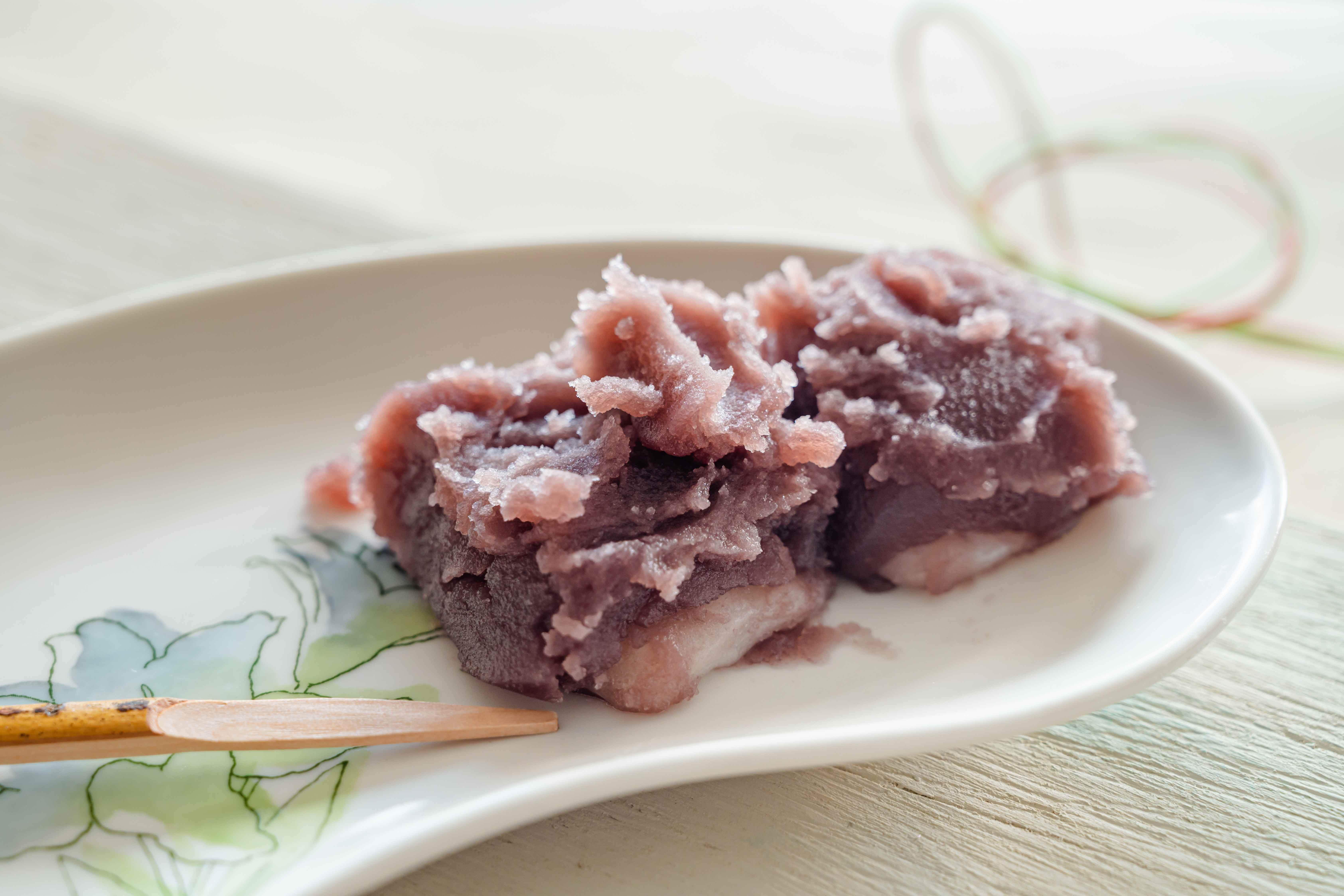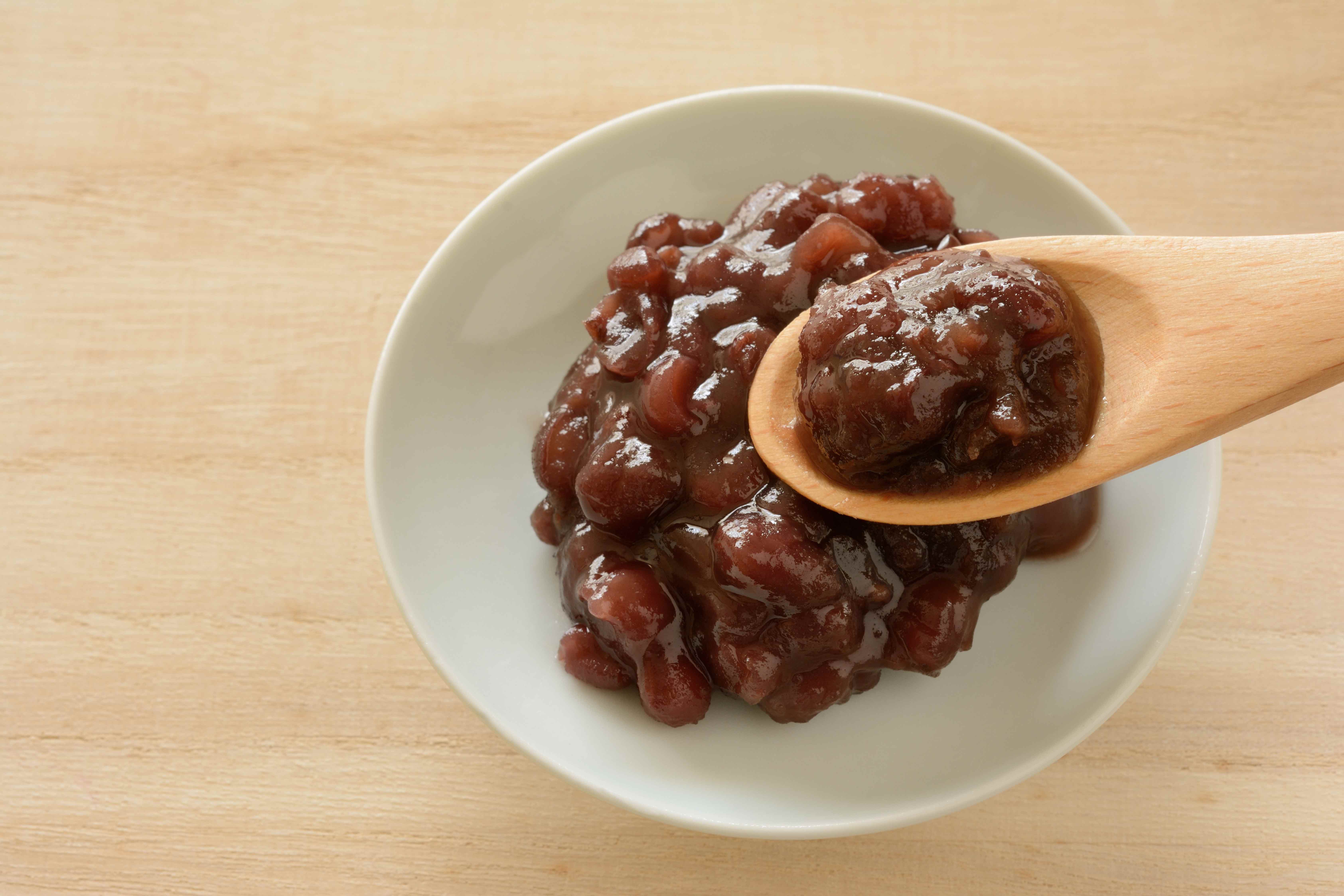When explaining about “wagashi”, we absolutely cannot forget to describe “anko (an-paste)”. (※It is also called “An” in Japanese) The most common type of “anko” will be “azuki-an”, which is made from red beans. As a matter of fact, there are many “anko” made from ingredients other than azuki beans. Just to mention a few of the legumes that can be used as ingredients, we can use broad beans, kidney beans, peas… Other than beans, other common ingredients are sweet potatoes, chestnuts, pumpkins, and sesame seeds. Note that when we say “An” in Japanese, apart from the sweet “anko” that we are going to mention in this article, we also say “an” for the “ingredients” (sometimes called “Tane”) of dishes that are wrapped in dough. “Anko” is a term used only for sweet ones, and the “an” includes both sweet and non-sweet types, right? Here’s a simple explanation of how to make “anko”… It is a sweetened paste made by boiling down starchy and fiber-rich ingredients into a paste. Depending on the ingredients used, it is called “Azuki-an (red bean paste)” or “Imo-an (sweet potato paste)”. If you actually prepare the ingredients and make your own, you will understand that “anko” is a very delicate cooking. The way you handle ingredients, the amount of ingredients, the heat, and the way you boil them down can all make a big difference in the quality of the cook. It is quite a difficult skill to make a stable and delicious “anko” with good smell and texture.

The original form of Japanese “An” is said to be based on “salted-an (Shio-an)” that was introduced from China in the 6th century. As the name implies, they were seasoned with salt and were therefore salty. It was around the Kamakura period (13th to 14th century) that red beans were used to make “azuki-an”. It was even later, in the 16th century or so, that sweet ones were made by using sugar and other ingredients. There were also “anko” that made use of the sweetness of the ingredients themselves, but some say that it was not until the Edo period that “anko” became the main sweet ingredient in “wagashi” as it is today. Sugar was not necessarily included in the basic seasonings used in cooking at that time. Therefore, the sweet taste “anko” used in “wagashi” is quite recent. It is common in the history of any region in the world that sweet things were treated as one of luxury ingredients, and “anko” in Japan was no exception. After such a long process, the sweet an-paste of today finally had become known to the general public. But well, it seems that the development of Japanese sweets became very popular in the Edo period, as many of the traditional Japanese cooking techniques had been developed. Most of the cooking skills of “wagashi” using “anko”(such as the realization of the very delicate flavor and texture of “anko” itself, and the ingenuity of the dough used to wrap and sandwich “anko”), that we eat today were perfected within a fairly short period of time from the late Edo period to the Meiji / Taisho period. In the Meiji and Taisho periods, Western confectionary culture came pouring in from Western countries, so the development of sweets with a fusion of Japanese and Western culture must have already been active at that time. That’s why we can feel that “wagashi” made with “anko” have such a concentrated “quality” to them. Hmmm… It’s hard to explain in words. All we can say is that you have to try it for yourself… Sorry.
“Koshi-an” vs “Tsubu-an”
In Japan, there are two types of “anko”, “Koshi-an” and “Tsubu-an”. Especially about the “Azuki-an”. Japanese people often talk about which of these two types of an-paste is more to their liking… ( ̄▽ ̄)/~~ “Koshi-an” is a type of an-paste made by boiling down red beans and other ingredients, then straining the mixture through a strainer to remove excess skin, seeds, and fibers, resulting in a smooth texture. “Tsubu-an” is type of an-paste that has been made without straining, purposely leaving the grains (skin, seeds, fibers, etc.) of the ingredients behind. Which one is more delicious? Well, in the end, it all comes down to personal preference. But, well, it totally depends on what kind of sweets they are used for and how they are used. Naturally, the “wagashi” that they will like should vary greatly depending on the type of sweets they prefer. When you eat sweets made with an-paste, you might want to pay a little attention to that. You will be able to feel the delicateness and profundity of “anko”.




